Soviet action, they string together defenses across the river with blocking forces where the desire to keep bridges.
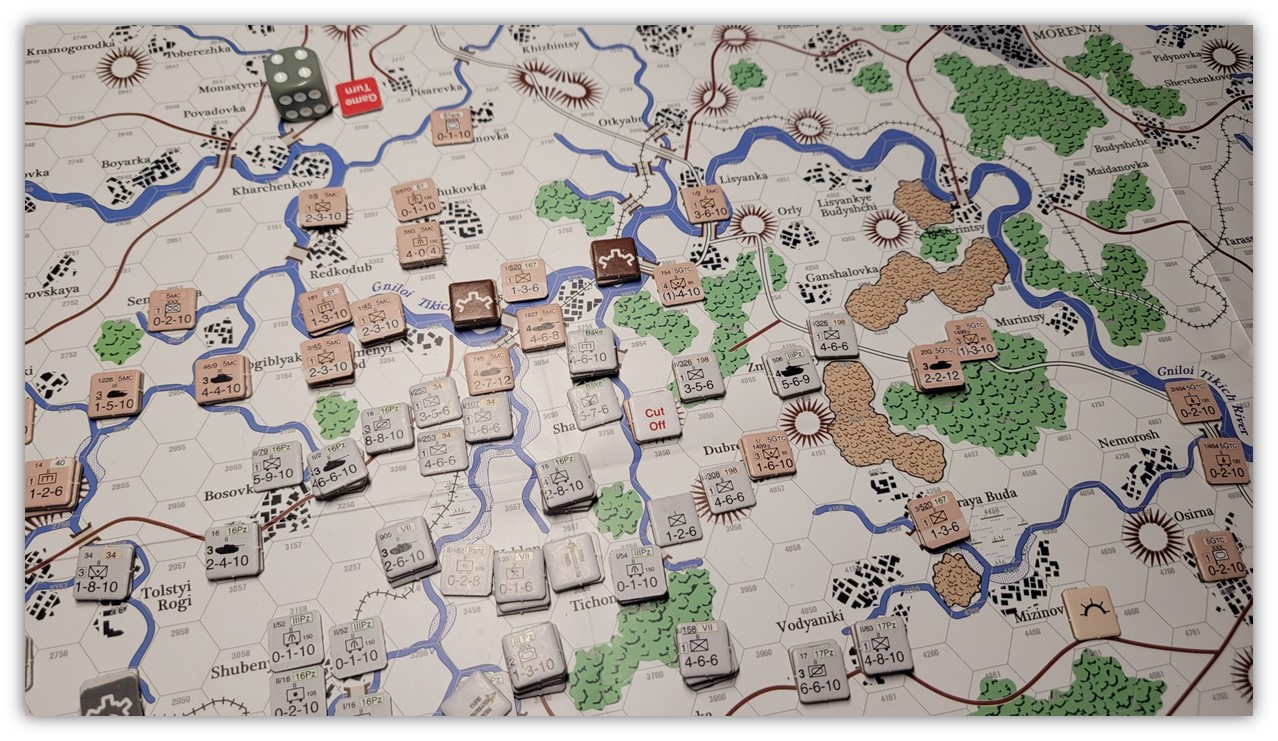
Soviet – AM action show above.
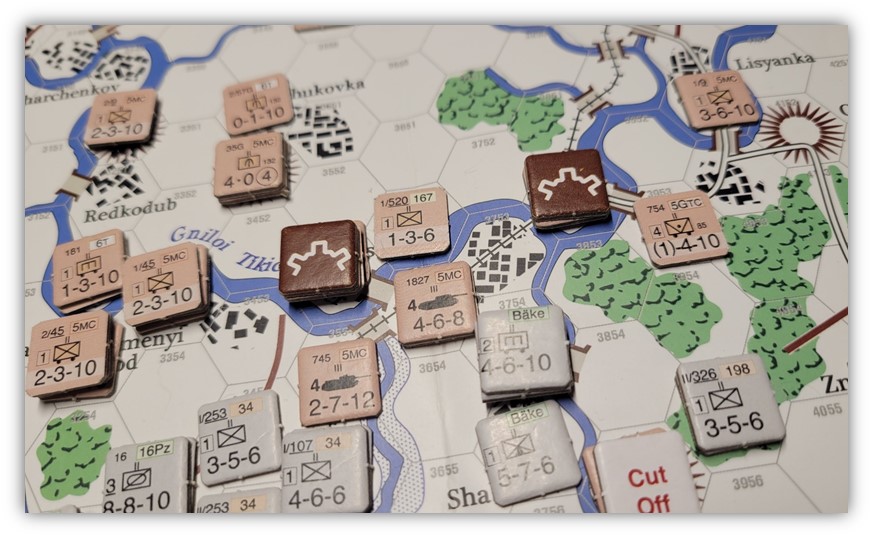
Mighty thin! Only the fierce defense of the 5MC save the day.
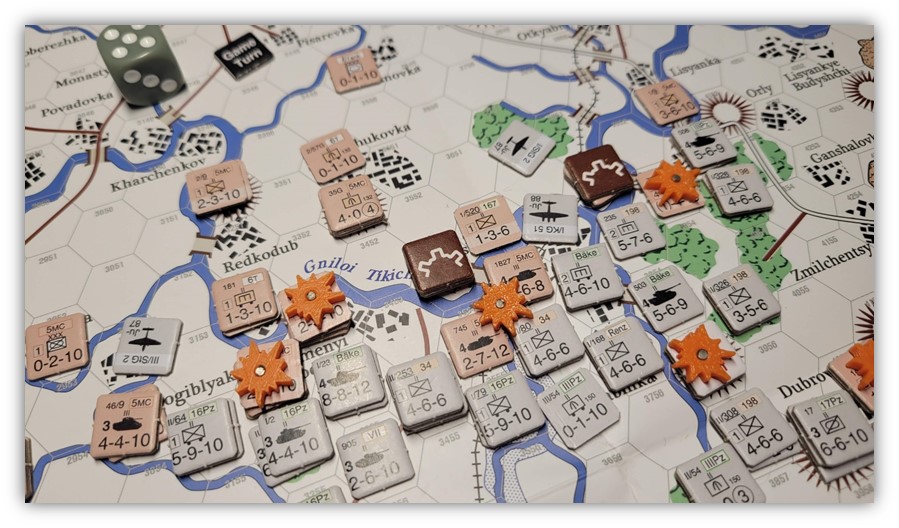
German PM attacks planned above!
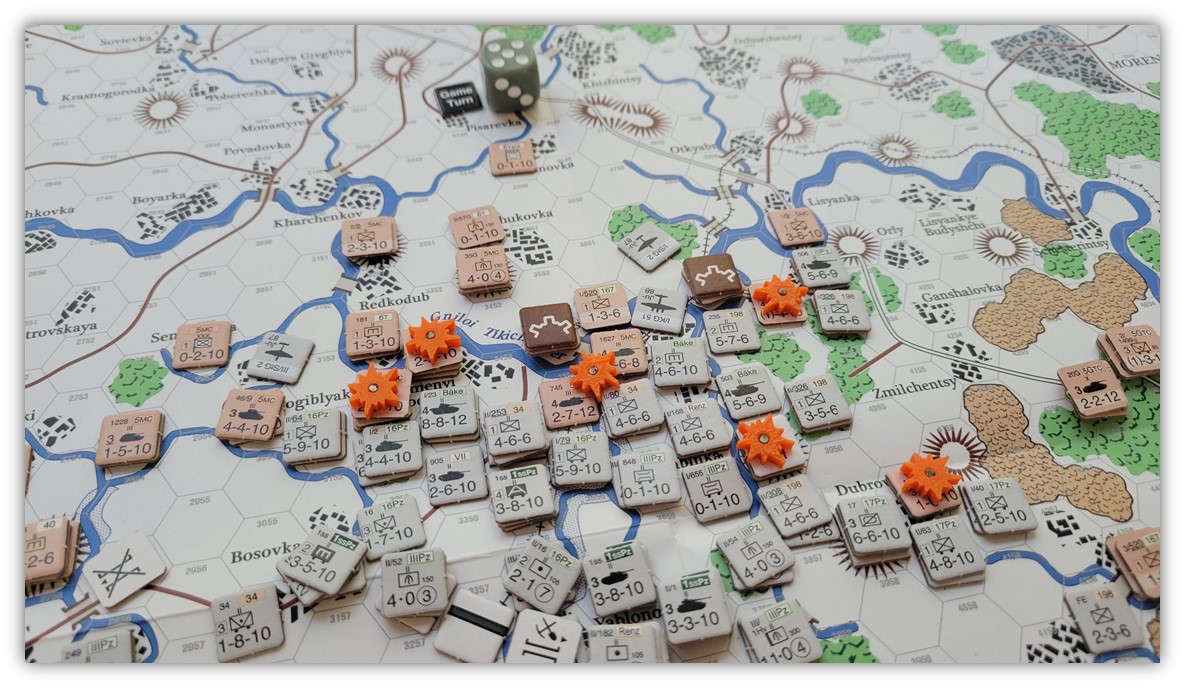
We can see the german effort being more and more concentrated on vital areas. They must establish a bridge head and hold!
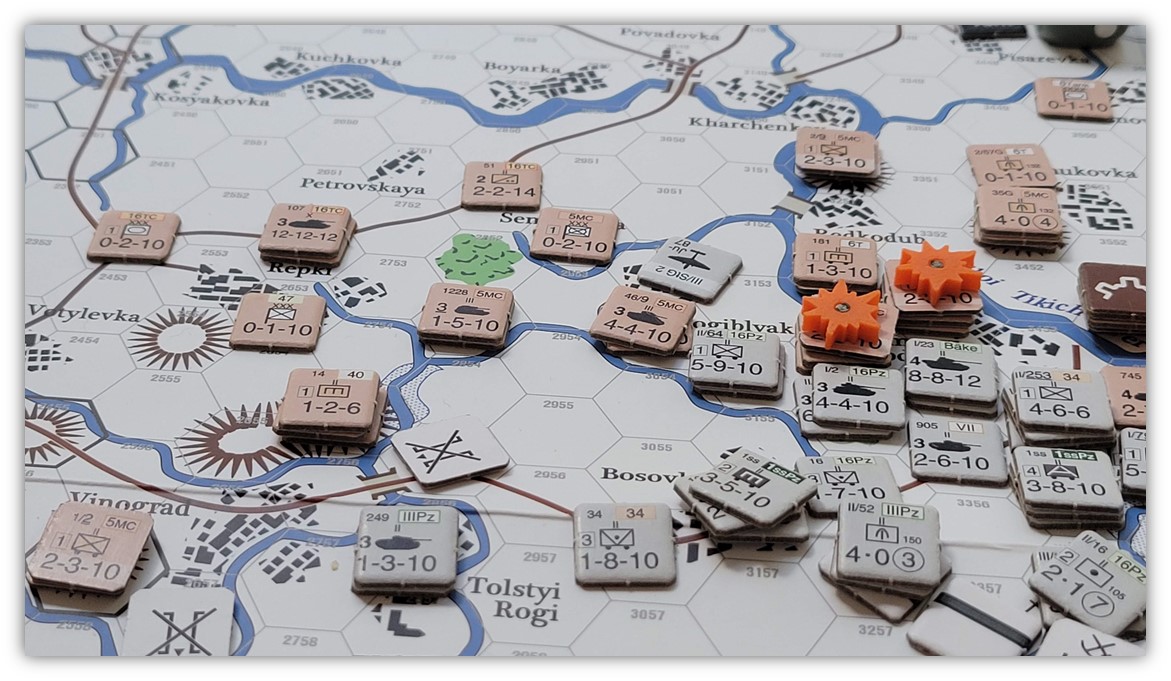
Soviets blow bridges and keep Vinograd secure, 1st SS units make their presence known.
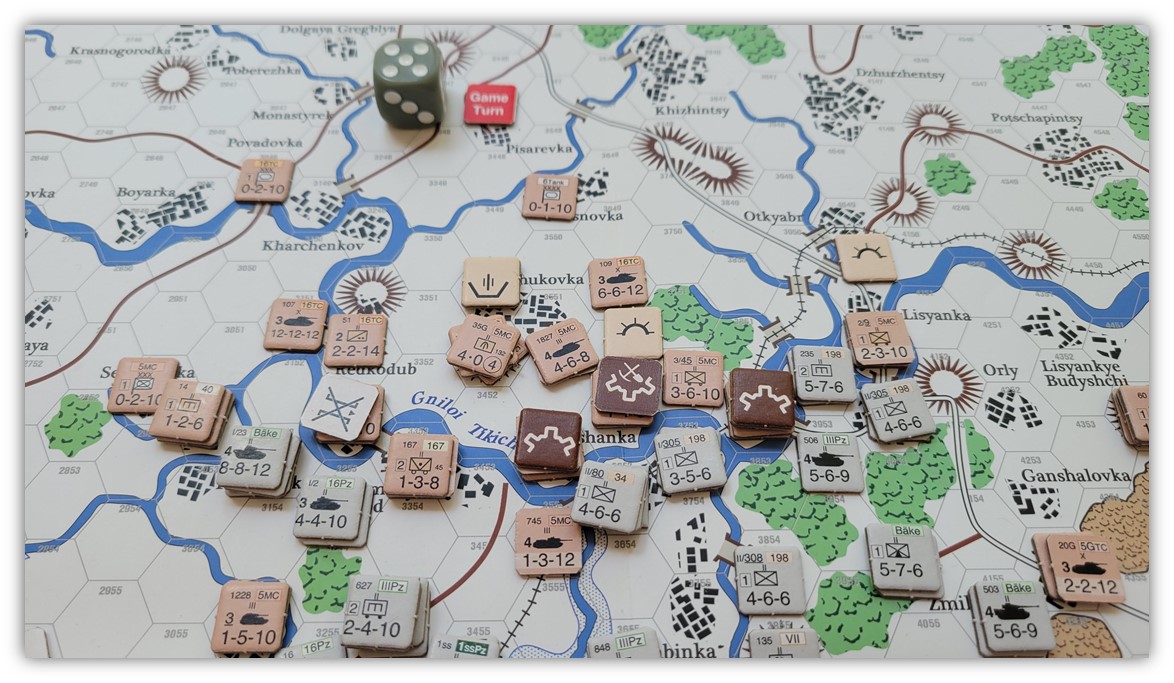
Soviets strip the line and reinforce the river, having got fortress and emplacements up, they feed men into the grist mill. The 198th and the 34th have linked and elements from III Pzr and BAKE roam the field looking to add value [note one attack we used armor “NOT IN COLUMN” to attack across the bridge. That was an error, tanks must be in column to use their Tank benefit for combat mods]
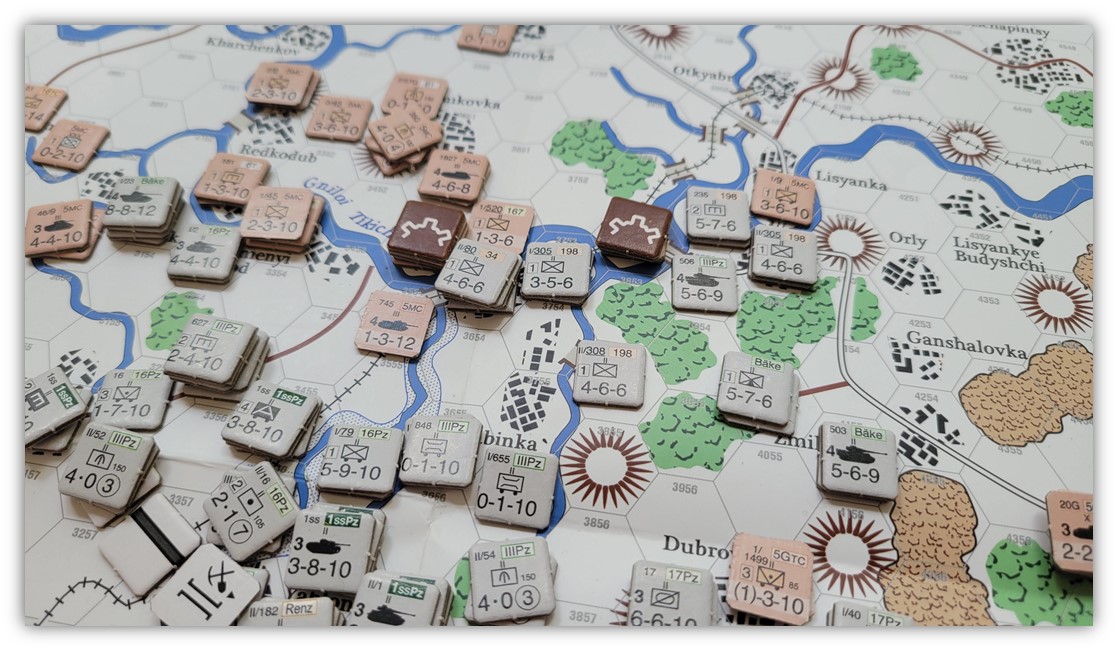
Next Turn:
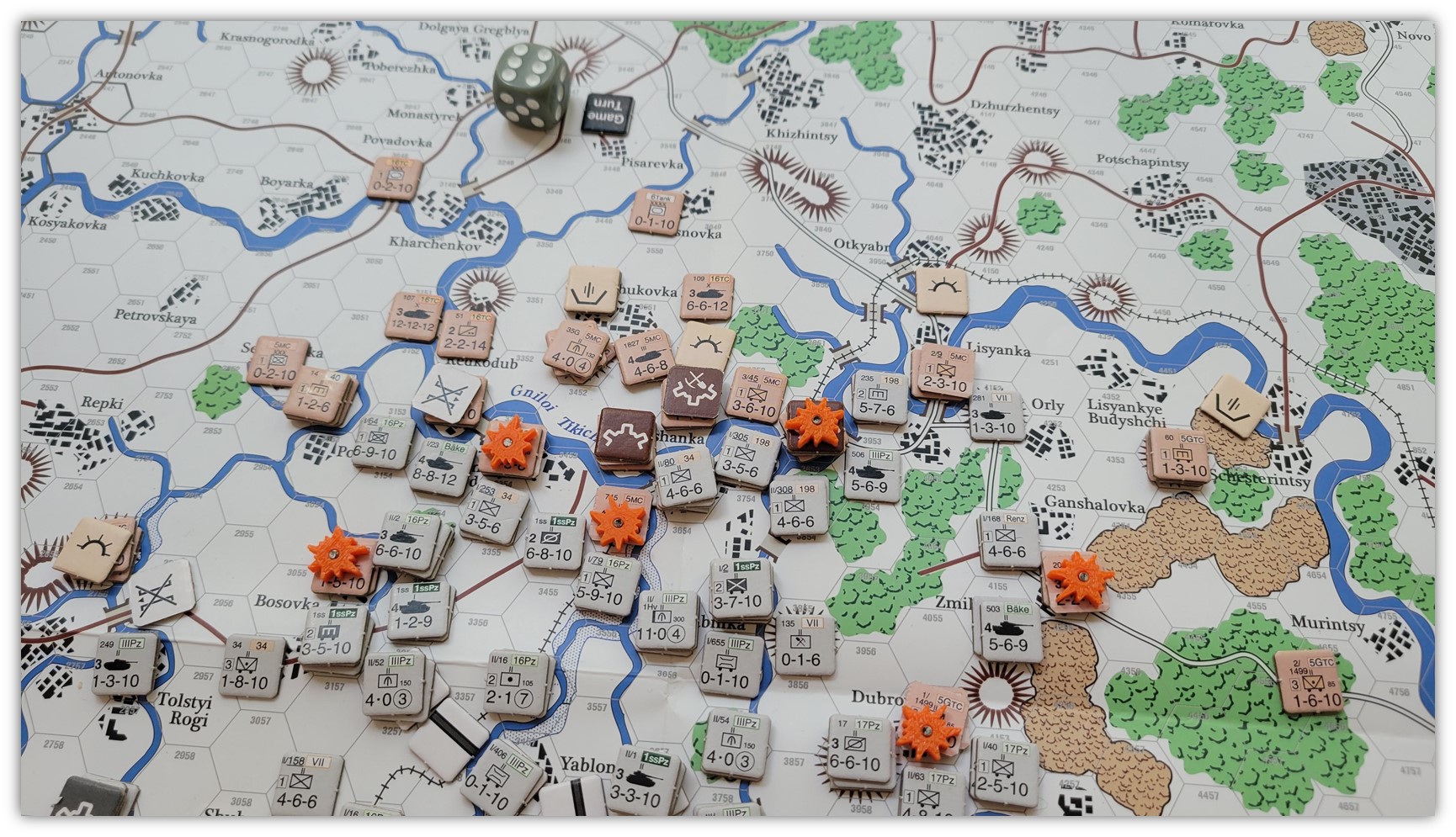
Planned combats above. 16th Tank Corp elements plug the holes and support 5MC on the riverline fortresses, and Soviet arty finally starts to make an impact.
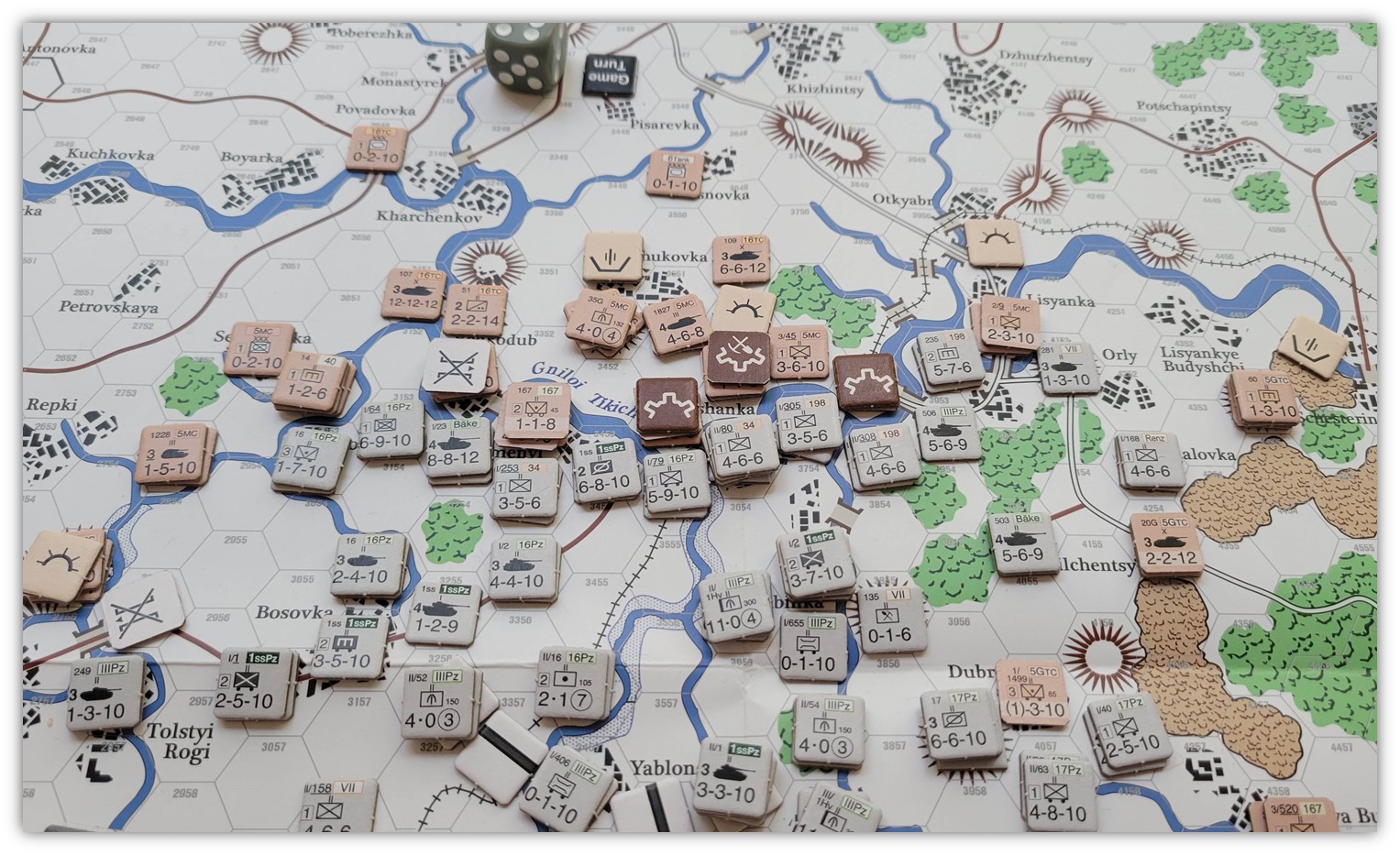
Her we can see the results. The Germans do well on the flanks, and indeed against the riverline. But cannot clear the nests of enemy enough to allow an advance.
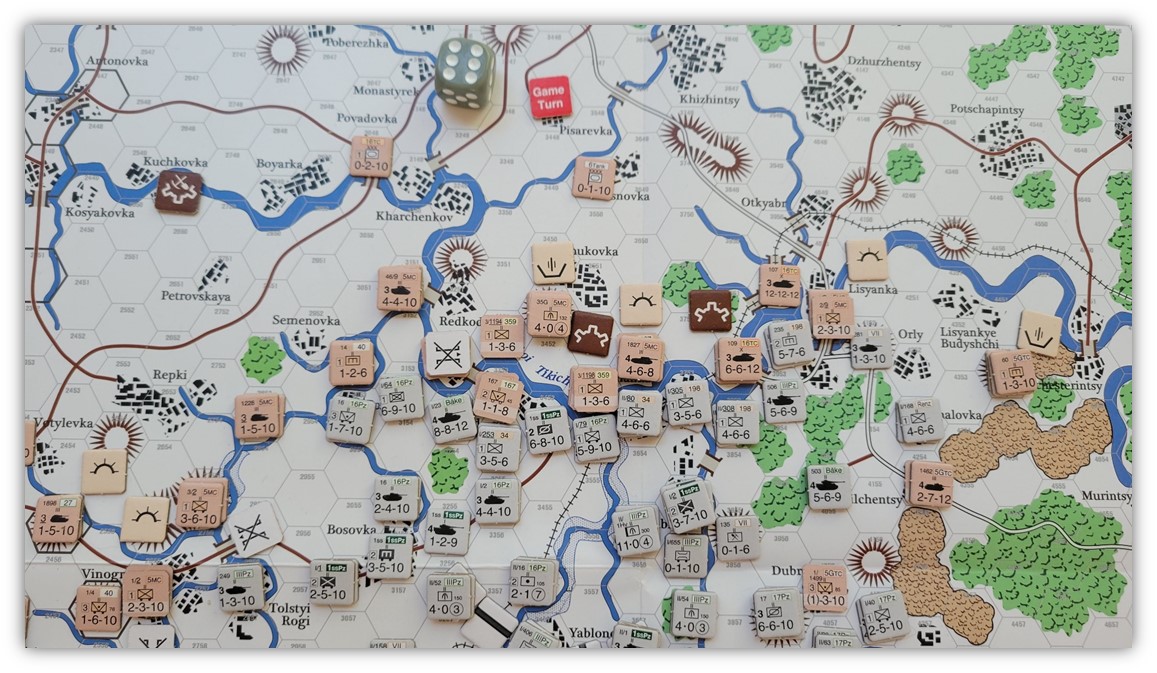
The Tikich is a sea of Grey on one side and Soviets on the other. The no eZOC across the river means both sides can sit adjacent and cherry pick who and when to attack.
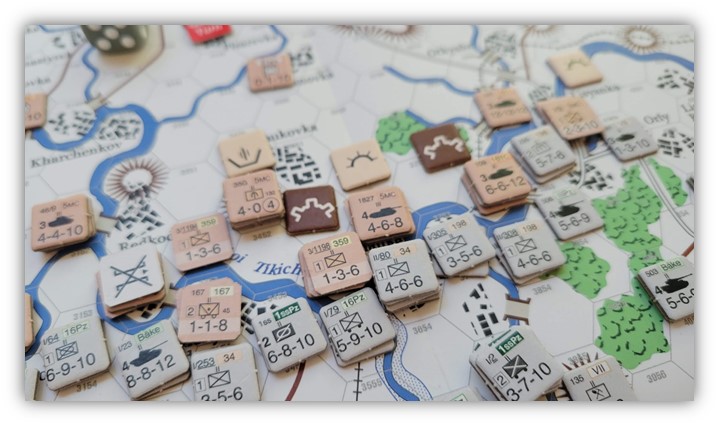
Close up of Soviet Defense.
With te last attacks occurring during the night. The Germans make what might be a fateful decision. They elect to go ‘extra night’ taking a 2nd night turn at the cost of tiring and even exhausting their men, which will have negative affects when attacking and attacked.
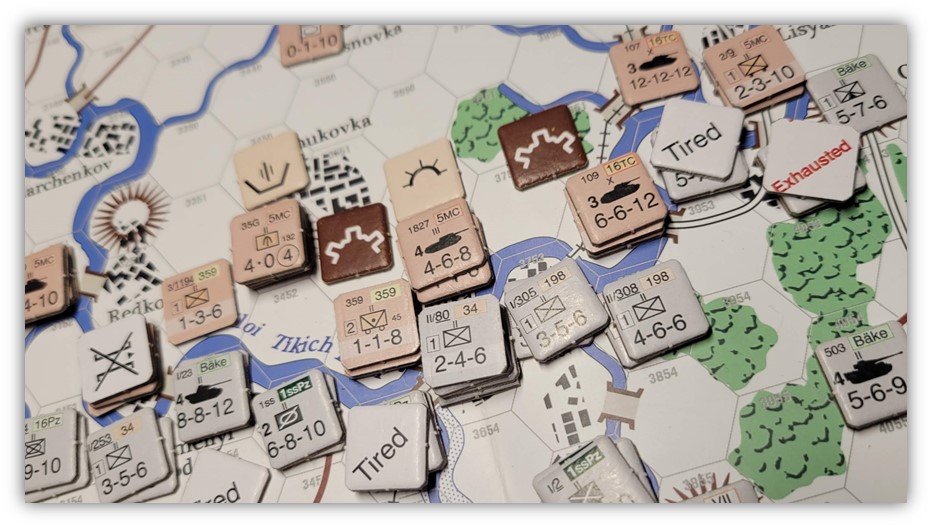
These attacks indeed prove ill-fated and do little and certainly do NOT get them across the river.
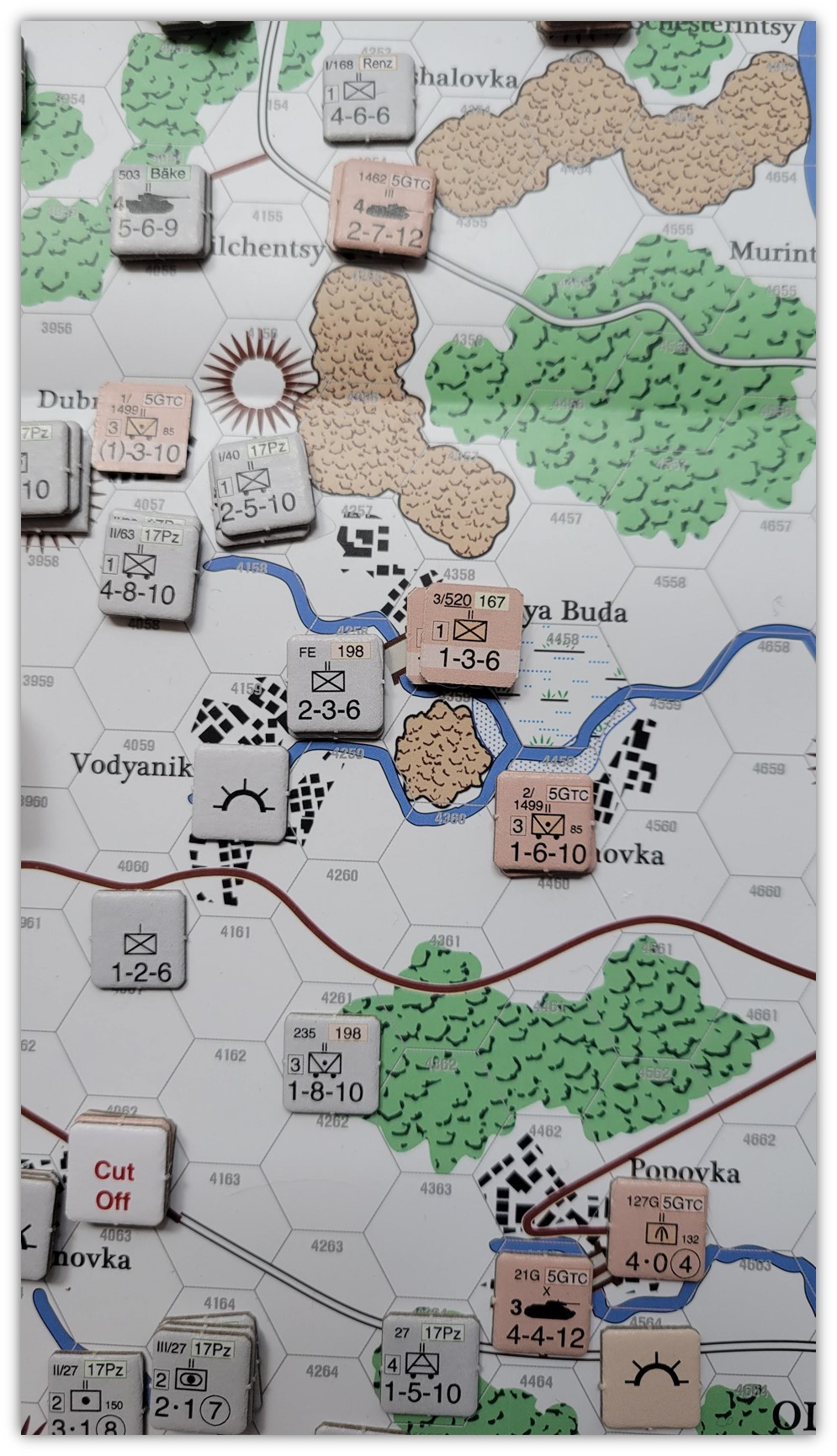
If the Germans had another division, they could swing right and clear the way!….Grrr.
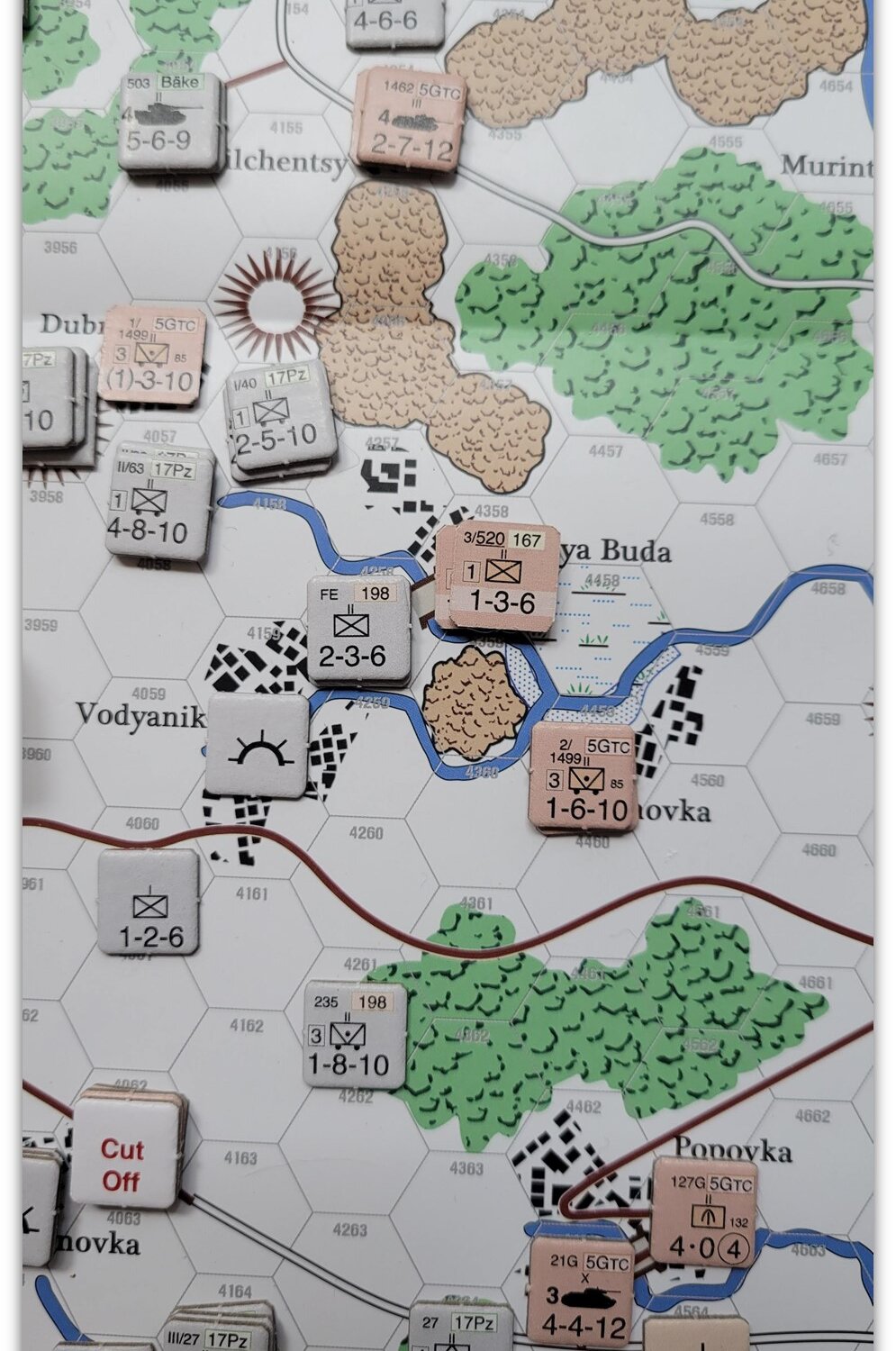
Nice. I understand that both sides are short of troops. There may have been few alternatives to your defensive deployment of the Soviets. But I would be real leery of putting antitank battalions holding hexes alone. They are a valuable resource, and will give great stability to a stack of infantry, but alone are fairly easy to overwhelm. But as I said, there may not have been a lot of better choices.
The overall dynamic is very typical of this period of the war. Both sides are badly worn down, and overstretched, with the Soviets increasingly holding the advantage. But among the weak formations there are a few that have recently been rebuilt and swim among the minnows like whales, or better, sharks. Which means whenever either side could mass some of their stronger armored formations and burst through the opponent’s line of infantry.
But then they would be confronted by the opponent’s armored reserves, and a knockdown, drag out fight would take place, and both sides would bleed, and then the fighting would die down, only to be resumed soon at some other point in the line, as the process was repeated. Since Kursk, this had been all moving steadily to the west.
Cheers, thanks for reading!